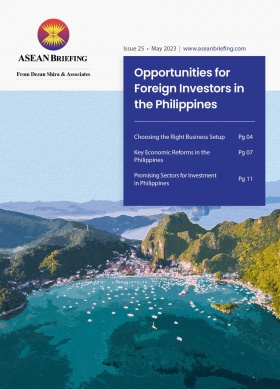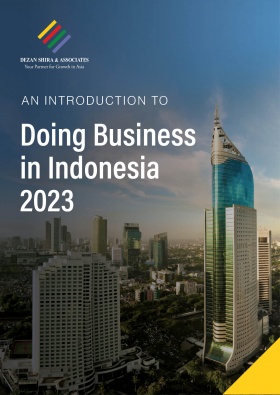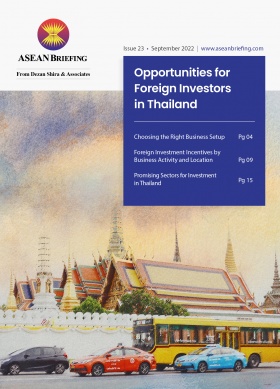How RCEP Ratification Benefits the Philippines
In a significant milestone for the Philippines, the Regional Comprehensive Economic Partnership (RCEP) officially took effect on June 2, 2023. This historic trade agreement opens a gateway of opportunities for businesses and investors within the country, paving the way for economic growth and prosperity.
We explore the implications of the RCEP’s implementation in the country.
On June 2, 2023, the Philippines officially saw the Regional Comprehensive Economic Partnership (RCEP) come into effect, marking the culmination of over two years since the participating countries concluded the free trade agreement (hereinafter referred to as the “Agreement”) in November 2020.
The Department of Trade and Industry (DTI), which played a key role in the RCEP negotiations, has called on Philippine enterprises to capitalize on the opportunities presented by this new agreement.
We explore the significance of this landmark agreement, and its implications for key sectors in the Philippines economy, and the key sectors poised to benefit. Moreover, we examine the challenges and opportunities that lie ahead as the Philippines embarks on a transformative journey.
About the RCEP
So, what exactly is the RCEP? The Regional Comprehensive Economic Partnership is an ambitious free trade agreement that brings together 15 countries in the Asia-Pacific region, representing a staggering 30 percent of the world’s population and accounting for approximately 30 percent of global GDP. This landmark agreement was signed after eight years of negotiations, solidifying a strong economic partnership among nations.
The RCEP unites the member states of the Association of Southeast Asian Nations (ASEAN), including Brunei, Cambodia, Indonesia, Laos, Malaysia, Myanmar, the Philippines, Singapore, Thailand, and Vietnam, with five of their significant trading partners: Australia, China, Japan, New Zealand, and South Korea. Together, this collaboration forms a formidable economic bloc that will redefine regional trade dynamics and foster deeper integration among its participants.
At its core, the RCEP aims to streamline trade and investment flows, reduce trade barriers, and establish a more transparent and predictable business environment. It covers a wide range of sectors, including goods, services, investment, intellectual property, e-commerce, and more. By harmonizing rules and regulations across participating countries, the agreement seeks to create fair competition and simplify trade processes.
The RCEP also represents a departure from traditional regional trade agreements by uniting advanced economies and emerging markets. This diverse membership allows the RCEP to encompass a broad spectrum of industries and provides a platform for cross-border collaboration, ultimately boosting competitiveness and creating new avenues for economic growth.
How the Philippines stands to gain
For the Philippines, the implementation of this agreement heralds a new era of immense potential. As a developing nation with a vibrant economy and a strategic geographical location, the Philippines stands to gain from increased market access, enhanced investment opportunities, and strengthened regional supply chains. Moreover, the agreement presents an opportunity for the country to leverage its competitive advantages in sectors, such as agriculture, manufacturing, and services while fostering innovation and technological advancements.
In the following sections, we will delve deeper into the implications of the RCEP’s implementation in the Philippines, exploring its potential impact on trade patterns, economic growth, and overall regional integration. We will also examine the challenges and opportunities that lie ahead, as the country embarks on this transformative journey.
Implications of the RCEP’s implementation in the Philippines
The implementation of the RCEP in the Philippines carries profound implications for the nation across various aspects of its economy and trade landscape. As this landmark agreement takes effect, it brings forth a range of opportunities and challenges that will shape the country’s future trajectory, including:
- Expanded market access and trade flows: One of the key benefits of the RCEP for the Philippines is the expanded market access it provides. By reducing trade barriers and eliminating tariffs on a wide array of goods and services, the agreement opens new avenues for Philippine businesses to tap into a larger consumer base within the RCEP member countries. This increased access can drive export growth, enhance market diversification, and contribute to the country’s economic expansion.
- Strengthened regional supply chains: As the agreement aims to promote closer economic integration among its member nations, fostering the development of regional supply chains, for the Philippines, this presents an opportunity to deepen its participation in global value chains (particularly in sectors where it holds a competitive advantage). By integrating with the supply chains of RCEP countries, the Philippines can enhance its manufacturing capabilities, attract foreign direct investment (FDI), and leverage its skilled workforce.
- Enhanced investment opportunities: The RCEP facilitates investment flows and provides a more predictable and transparent investment environment. This can attract foreign investors to the Philippines, as the agreement offers a framework of rules and regulations that protect their investments. The increased inflow of foreign direct investment can stimulate economic growth, promote technology transfer, and spur innovation in key sectors of the Philippine economy.
While the RCEP presents the Philippines with significant opportunities, it poses challenges and adjustments. Local industries may face increased competition from foreign firms, necessitating the need for strategic planning, improved productivity, and enhanced competitiveness.
On the other hand, there is a great potential for broader socioeconomic benefits: the increased trade and investment flows can generate employment opportunities, especially in sectors that experience growth due to the agreement. Additionally, consumer welfare may improve through access to a wider range of quality products at competitive prices, stimulating domestic consumption and raising living standards.
Key Philippines sectors to benefit from the RCEP
Sectors in the Philippines that can benefit from the RCEP include agriculture, electronics, and business process outsourcing (BPO).
Agriculture
In the agriculture sector, there were concerns about the RCEP leading to an influx of imported produce. However, Arsenio Balisacan, the Secretary of the National Economic and Development Authority, addressed these concerns by explaining that only 15 out of 33 tariff lines for agricultural commodities will have tariff reductions. Most of these commodities are not produced in the Philippines, and the affected tariff lines make up only 1.9 percent of agricultural tariff lines and 0.8 percent of imports. Balisacan also highlighted the need for investments in AgriTech, infrastructure, and mechanization to improve yields, and irrigation, and reduce costs and wastage.
Electronics
The electronics sector in the Philippines plays a significant role in the country’s manufacturing output. The export of electronics and semiconductors is expected to reach US$50 billion in 2023, with semiconductors alone accounting for 47 percent of total exports.
The RCEP can help Philippine electronics and semiconductor manufacturers by reducing costs for imported components and raw materials, as well as for exported electronic goods. This sector heavily relies on imported parts and serves as the back-end assembly and testing stage in the supply chain. By improving market access, the Philippines aims to attract investments to enhance its participation in the global value chain, especially in areas like consumer electronics, power electronics, biomedical electronics, and auto electronics.
Business process outsourcing
The BPO industry is another thriving sector in the Philippines, contributing around US$30 billion annually to the economy (equivalent to 11 percent of GDP). The country holds a significant share of the global BPO market, employing over 1.3 million people in more than 1,000 BPO companies, along with an estimated 1.5 million Filipino freelance workers.
The RCEP can stimulate investments to expand the BPO industry into knowledge process outsourcing (KPO). This includes IT outsourcing, legal transcription, animation game development, healthcare processing and coding, data analytics, financial research, and software development. By attracting multinational companies, the Philippines aims to further develop its KPO services and opportunities.
Other industries to watch
The RCEP agreement is expected to lead to increased economic integration, creating growth opportunities and attracting investment in various sectors. These opportunities include:
- E-commerce: The RCEP agreement promotes digital connectivity, which creates a favorable environment for the expansion of e-commerce. Investors can consider investing in online marketplaces, logistics infrastructure, and digital payment systems to benefit from this growing sector.
- Renewable energy: Both China and the Philippines have made commitments to develop renewable energy sources. Investors can explore projects related to solar, wind, and hydroelectric power to take advantage of the emphasis on sustainable energy and contribute to the growth of this sector.
- Financial services: The RCEP agreement facilitates financial cooperation, opening up opportunities for growth in the financial services sector. Investments in areas such as banking, insurance, fintech, and digital payment platforms can yield significant returns as financial integration increases within the region.
- Tourism and hospitality: With the implementation of the RCEP, there is likely to be an increase in travel between China and the Philippines, which will benefit the tourism and hospitality industries. Investors can capitalize on the growing demand for accommodations, attractions, and travel services by considering investments in these sectors.
The RCEP’s implementation in the Philippines symbolizes a transformative moment, where the nation stands poised to harness its strengths and seize the opportunities this landmark agreement offers. By leveraging its strategic geographical location and vibrant economy, the Philippines can position itself as a competitive player in the global market, contributing to regional prosperity and building a brighter future for its people.
About Us
ASEAN Briefing is produced by Dezan Shira & Associates. The firm assists foreign investors throughout Asia and maintains offices throughout ASEAN, including in Singapore, Hanoi, Ho Chi Minh City, and Da Nang in Vietnam, in addition to Jakarta, in Indonesia. We also have partner firms in Malaysia, the Philippines, and Thailand as well as our practices in China and India. Please contact us at asean@dezshira.com or visit our website at www.dezshira.com.
- Previous Article Indonesia’s Public Holidays and Joint Leaves for 2023
- Next Article Indonesia Proposes Limited FTA with the United States







